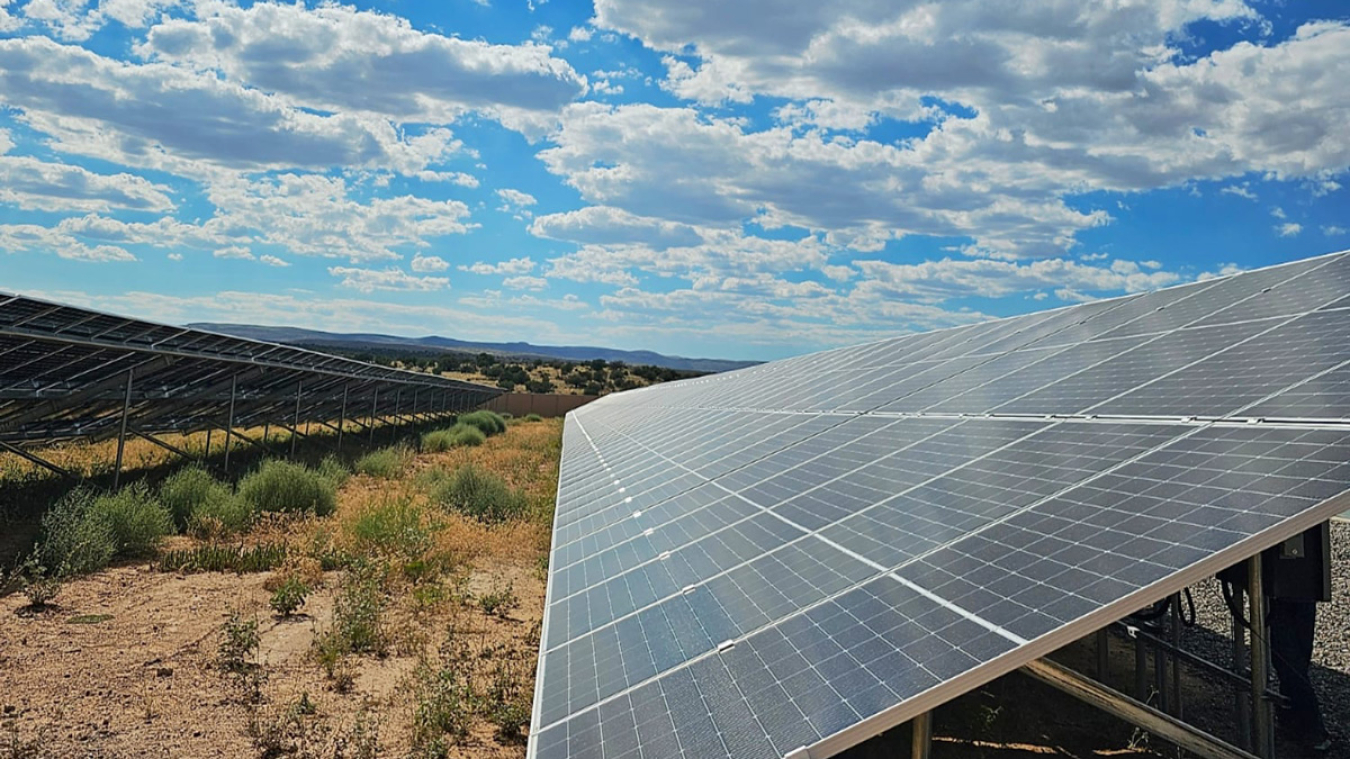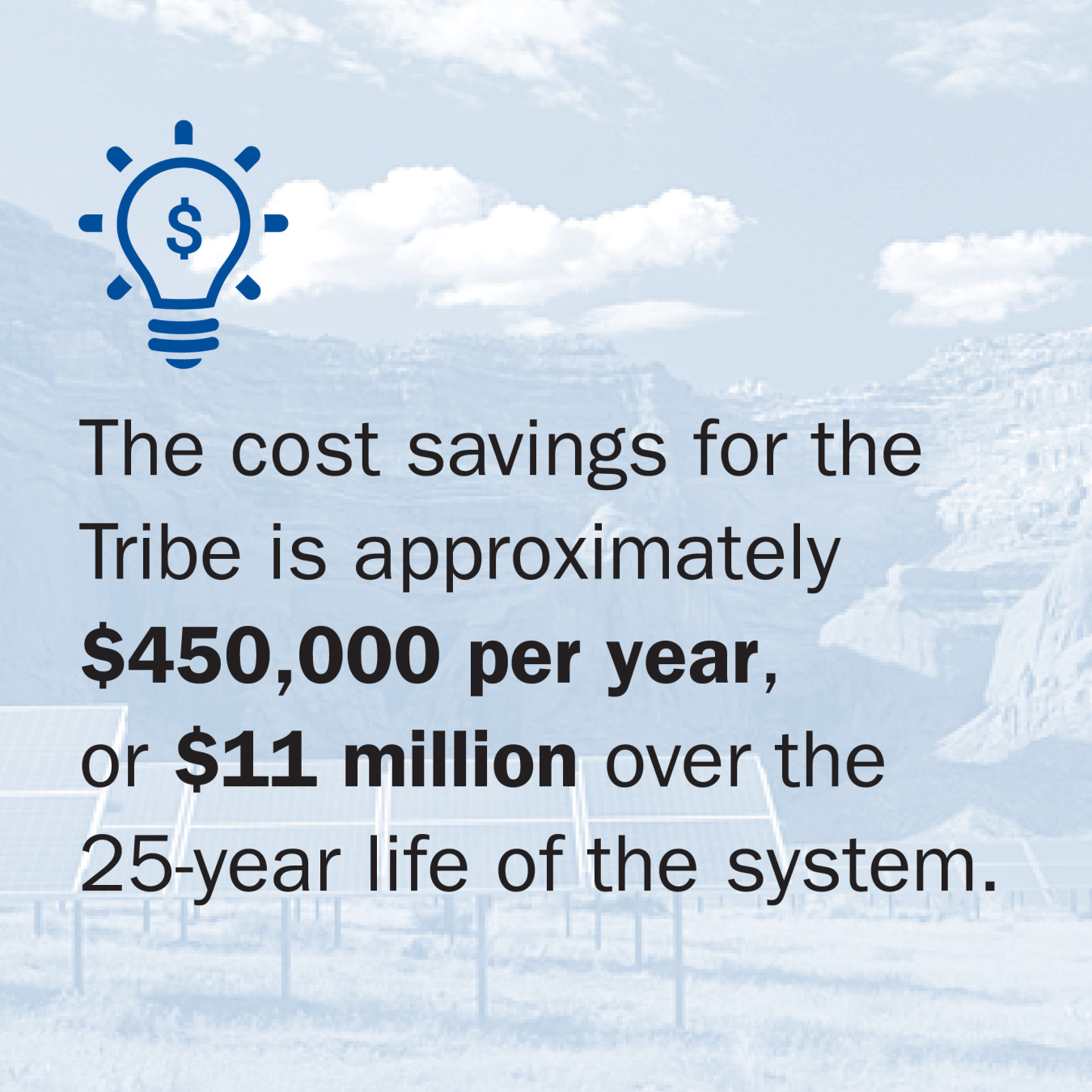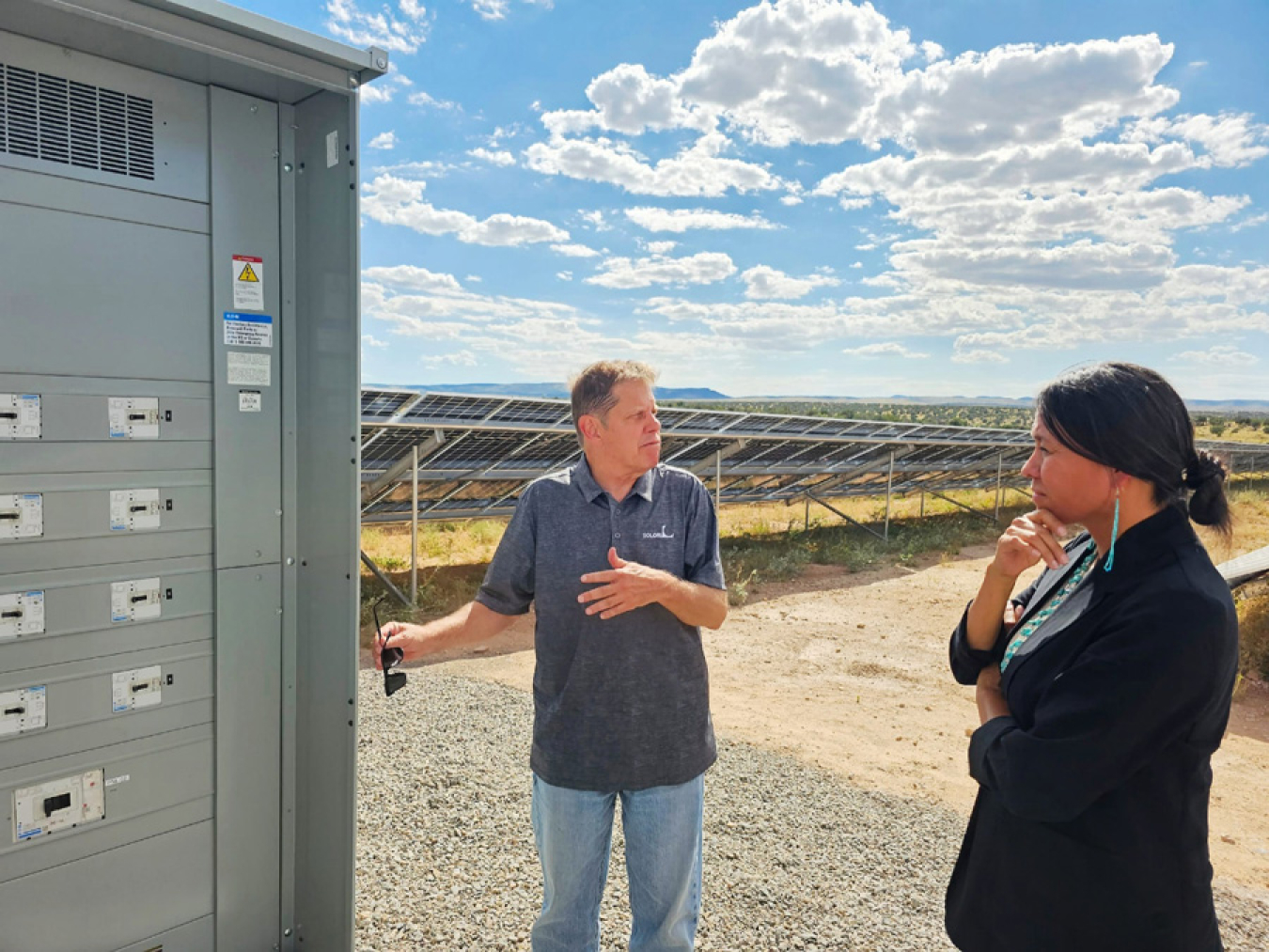Solar-Plus-Storage Equals Savings of $450,000 Per Year at Grand Canyon West.
Office of Indian Energy Policy and Programs
September 26, 2023Solar-Plus-Storage Equals Savings of $450,000 Per Year at Grand Canyon West
In this tribal energy snapshot, learn more about the Hualapai Indian Tribe’s Building Resiliency into the Grand Canyon West Microgrid project. The project was co-funded by the U.S. Department of Energy’s Office of Indian Energy.

Combined with battery storage, the Hualapai Tribe’s new ground-mounted photovoltaic system will be able to supply up to half of Grand Canyon West’s annual load with clean, resilient, affordable energy from the sun.
Project Quick Facts
As the home of the world-famous Grand Canyon Skywalk, Grand Canyon West (GCW) is the primary economic engine that supports the Hualapai Indian Tribe, attracting more than 1 million tourists annually. To improve the resilience of the remote, “islanded” (non-interconnected) GCW electrical generation system, the Tribe installed a solar photovoltaic array and battery system to enhance the system’s ability to withstand short-term outages and rising energy costs. The solar-plus-storage system is capable of providing 50% of the annual energy needed at GCW to supplement the existing diesel generators and is expected to save the Tribe more than $450,000 per year in energy and maintenance costs.
Take a glance at the project by the numbers:
Total energy generation
The system is capable of generating approximately 1,600 megawatt-hours per year, enough electricity to supply 150 average American homes for one year.
Savings to the Tribe
The cost savings for the Tribe is approximately $450,000 per year, or $11 million over the 25-year life of the system.

Insights from the Project Team

Learn from Kevin Davidson, Planning Director with the Hualapai Indian Tribe, on his experience with the project.
Why did the Tribe initially pursue this clean energy project? Was there a specific event or concern that sparked the need?
We first began working—and are still working—on a power line to Grand Canyon West. But by 2019 the Tribal Utility Authority Board said, “You know, this is taking quite a bit to get this power line approved through the Bureau of Land Management. Let's focus on solar. Everything is going green.” We figured with a solar grant we could reduce our cost to maybe $0.20 a kilowatt from a current $0.40 with diesel.
What has been the biggest “lesson learned” from the project?
Integration of the battery system and the current generator sets. Make sure your communications are compatible up-front. Know your contractor and energy provider can actually work together. You can plug in a solar array at your house with your incumbent power provider just like that. Here we have a system that’s making as much power as the diesel generators, so the two have to be in parity. How they’ll work together has to be ironed out.

Office of Indian Energy Director Wahleah Johns examines the newly installed battery energy storage system at an Aug. 30 event at Grand Canyon West celebrating the Hualapai Tribe’s solar-plus-storage microgrid improvement and a multi-million-dollar tribal water-rights settlement.
How will the Tribe benefit from the project when it’s fully operational?
The reduction of fuel costs and maintenance. We're looking at saving maybe $1 million a year on that alone. The solar with a 750-kilowatt-hour battery can help us cut the load by 50% on the diesel generators and save several hundred thousand a year in fuel costs. The generators have been online since 2015, and we spend several hundred thousand dollars a year in maintenance. And the solar arrays will turn them into a backup generator.
Learn More
Learn more about this project, including additional background information, cost, and status on the project summary page.
Explore more tribal energy projects through the tribal energy projects database.

